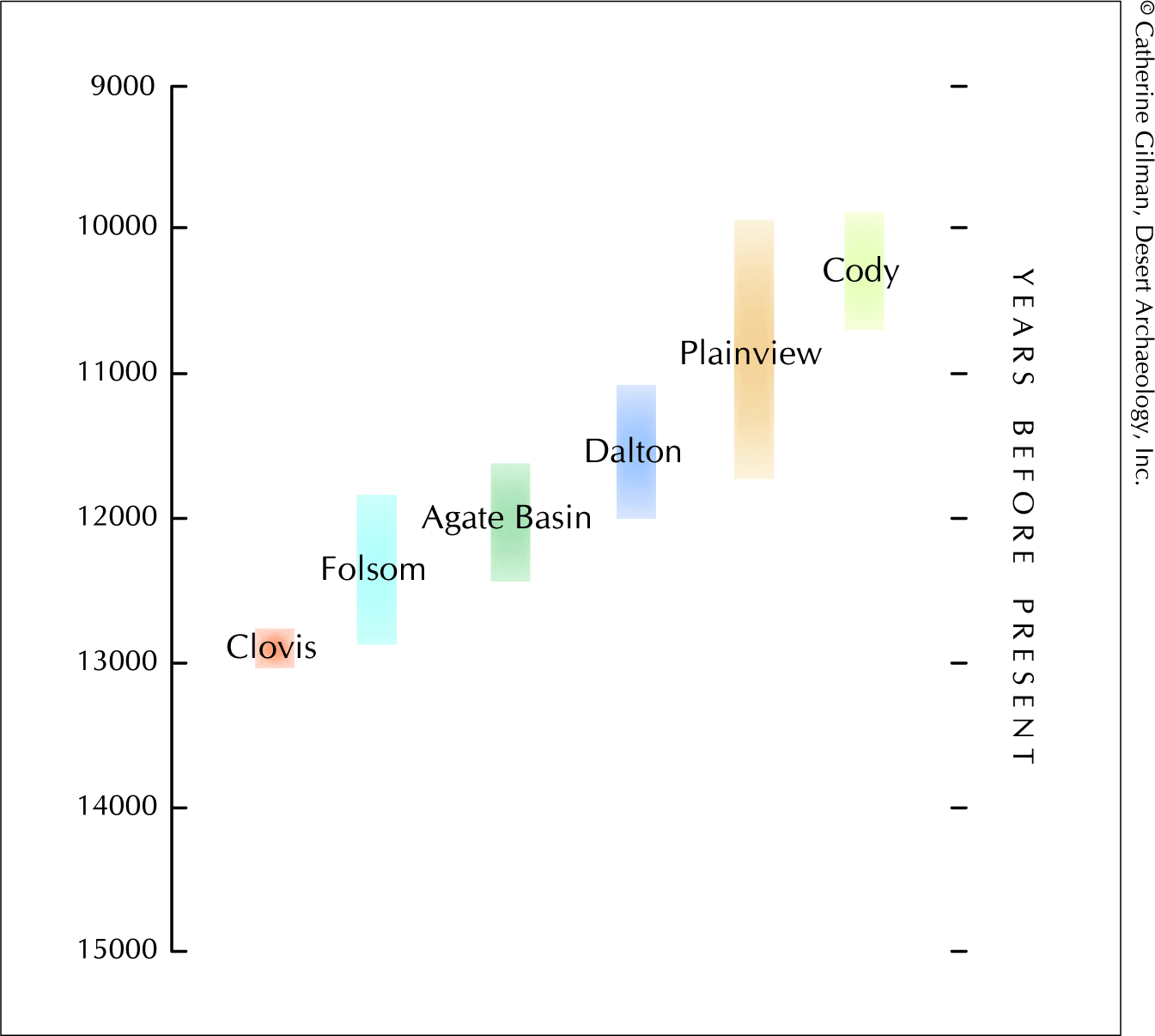
The first people to reach North America, called "Paleoindians" by archaeologists, arrived from northeast Asia more than 10,000 years ago—just how long ago remains unclear. The Paleoindians were the ancestors of most of today's Native Americans, but two groups (the Nadene speakers, including the Navajo and Apache, and the Eskimo-Aleut speakers) arrived during later waves of migration from Asia.
This is, of course, the scientific interpretation. Each Native American group has traditional stories of their origins that are quite different. As a research-oriented intitution, the Maxwell Museum will present the story as told by its own "tribe," the anthropologists.
The first people who reached North America found an environment that was different than today. At the end of the Pleistocene, Siberia and Alaska were a single land mass—Beringia—and it was possible to travel by land or coastal routes from one continent to the other. The northern part of the continent was covered with ice sheets and tundra, and farther south there were savannas where today there is only grassland or desert. Siberia, Beringia, and the Americas were home to a variety of large mammals, known as megafauna. Hunting these large animals was a significant part of life in the Paleoindian period.
Because many of the large game animals migrated each year, or were widely scattered across the landscape, people also traveled. Without domesticated animals or wheeled vehicles to carry things, the hunting groups did not take much with them. Survival required planning and an understanding of what plants and animals would be available at different times of the year in each place they visited. Materials for toolmaking exist only in certain places, so people had to predict what they would need to last a year. One strategy used by Paleoindian people was caching: they would make a set of spearpoints and leave them in a protected place until the next time they passed through the same area. Some of those caches are still being found.
Archaeologists have studied how Paleoindian spear points changed over time. When similar points are found in an archaeological site, the archaeologists can use the changing styles to determine when people were there. This chart shows the names that have been given to different shapes of points. The thumbnails below the chart lead to pages showing Paleoindian points in the museum's collections.


|

|
Points of this kind were used on light spears, or "darts," launched with wood arm extenders known as atlatls. For more information on how this technology worked, visit the atlatl page.
It's clear that Paleoindians were highly skilled hunters who could take on animals as big as mammoths. Still, big-game hunting does not provide the nutrition that people need to survive and reproduce. Excavations in Paleoindian sites show that the first Americans also relied on small game—in fact, that they would hunt almost anything that moved. There is less evidence for use of plant food, but historically known hunting groups invariably rely on plants as well as animals. In any case, as time passed and the megafaunal went extinct, humans throughout the Americas shifted to an economy based heavily on small game and plant foods. It is this economic shift, more than anything else, that marks the end of the Paleoindian period.
Paleoindian timeline copyright © Catherine Gilman, Desert Archaeology, Inc.; used by permission. All other content copyright © Maxwell Museum of Anthropology, University of New Mexico. High-resolution verson of Maxwell Museum photographs may be ordered from the photo archives. Please make note of the catalogue number. For more information please visit the photo archives web page
Page last revised on March 3, 2010. Please report problems to toh@unm.edu